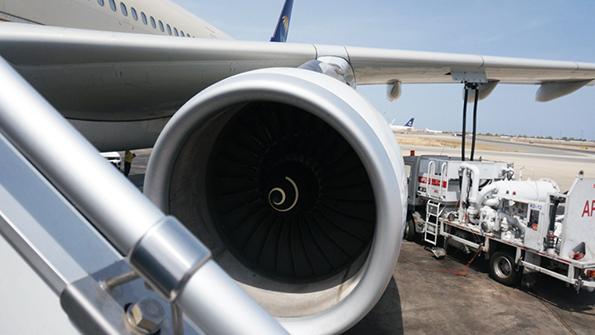
Since entering service in March 1995 as one of the powerplant options for Airbus’ A330 aircraft, the Rolls-Royce Trent 700 has built up a dominant market share. The engine type has long competed with GE Aviation’s CF6 and Pratt & Whitney’s PW4000 to power the A330 and, as of the start of 2021, it accounts for 67% of the segment, according to Aviation Week’s Fleet & MRO Forecast data, in comparison with its rival CF6 (20%) and the PW4000 (13%) engine types. In the overall widebody engine market, which numbers around 12,600 engines, Aviation Week estimates the Trent 700 makes up roughly 11% of that figure with 1,416 in-service units. Air China has the most engine units on its books with 116 Trent 700s operating. China Eastern Airlines, which has approximately 100, follows in a close second.
However, due to the outbreak of COVID-19 in early 2020 leading to global cross-border restrictions, the widebody segment is set to take on a much different form with long-haul capacity supply now outstripping demand. Despite its popularity with operators, the Trent 700 has not been immune to the effects of the crisis. Like many engines, its average flight-hour utilization fell from pre-virus predictions of 3,837 hr. in 2021 to a revised 3,129 hr.
High volumes of A330s powered by Trent 700s will remain parked over long-term periods as airlines reshape their fleets in a postcrisis industry. Parked aircraft like the A330 will mean a continuous flow of work for maintenance, repair and overhaul (MRO) providers in areas such as restoration, which will be required on the aircraft and their engines during their groundings. More MROs have also catered to the engine types in terms of both maintenance and storage services. At the start of 2021, UK-based Aircamo Engines was approved by the European Union Aviation Safety Agency (EASA) for a new engine MRO and storage facility for engines including the Trent 700 along with the CFM56, Rolls-Royce RB211 and International Aero Engines V2500. For this year, 80 engines are expected to return from storage, followed by 44 for 2022 and 30 in 2023.
Nonetheless, heavier shop visits have been postponed or canceled due to the pandemic, a fact that has had a knock-on effect in the widebody engine market. Last year, Aviation Week predicted that total annual MRO spend for widebody engines would increase from $17 billion in 2020 to $25 billion in 2029. This forecast has since been revised down. Aviation Week’s outlook now expects MRO spend on the widebody market to increase from a much lower base of $13.9 billion in 2021 to a total of $21.3 billion by 2030.
It is also likely that A330 retirements will increase over the next few years, especially considering factors such as the maturity of the fleet and the gradual increase in the trend of carriers moving to new-generation successors—such as the Airbus A330neo, which operates with the Trent 7000 engine. In the next few years, this retirement wave will likely lead to an increase in spare parts and materials associated with widebodies like the A330 and its associated engine types. But this workload will not peak until the top of the decade when 68 engines will leave the commercial fleet, the majority of which will be traditional retirements. Over the course of 10 years, the Asia-Pacific region will see the most retirements with 70 engines estimated to leave the fleet during that period.
The cargo segment has provided a relative shot in the arm, with the likes of DHL acquiring several converted Trent 700-powered A330-300s last year and airlines such as Iberia converting A330 passenger aircraft into freighters. Ten redeliveries of engines for passenger-to-freighter converted aircraft are expected in 2021.
Rolls-Royce, which has been hit by the pandemic itself in terms of financial losses and job cutbacks, still sees the engine aftermarket as a lucrative future endeavor through both its tailored maintenance agreements and its Trent engine overhaul network. Over the next decade, Rolls-Royce’s overall MRO spend across its entire portfolio is projected at $38.6 billion by Aviation Week. The engine will account for $2 billion of maintenance work this year, before nearly doubling to a peak of $3.6 billion in 2024 and tailing off at $2 billion by the end of the decade in 2030, according to Aviation Week’s 2021 Fleet & MRO Forecast.
In a move aimed at growing its capabilities for the engine, Rolls-Royce unveiled a complementary SelectCare repair and refurb service program for the Trent 700 in October 2020. Called SelectCare Repair, the offering will cover check and repair shop visits—typically taking place between scheduled refurbishments when ingestion of foreign objects or component failures occur—for a dollar-per-engine-flying-hour fee.

